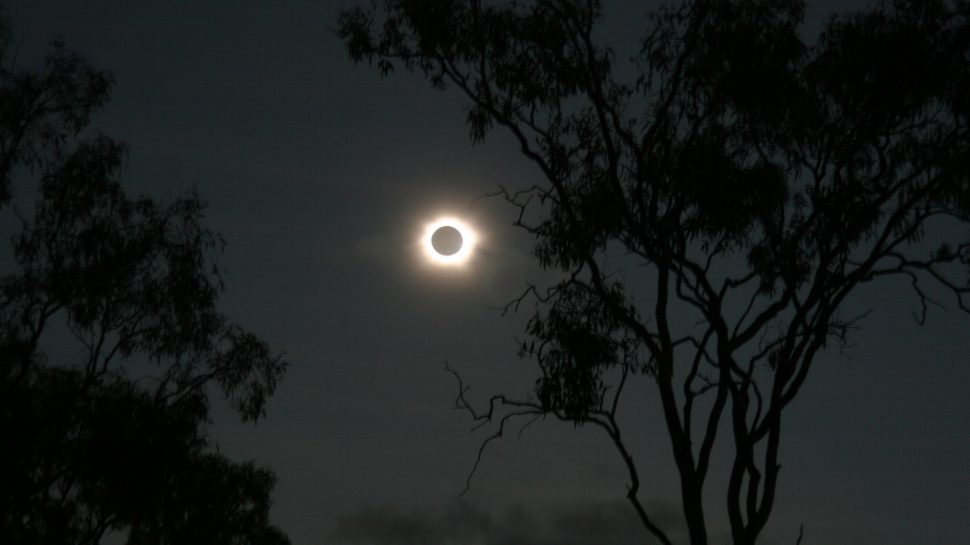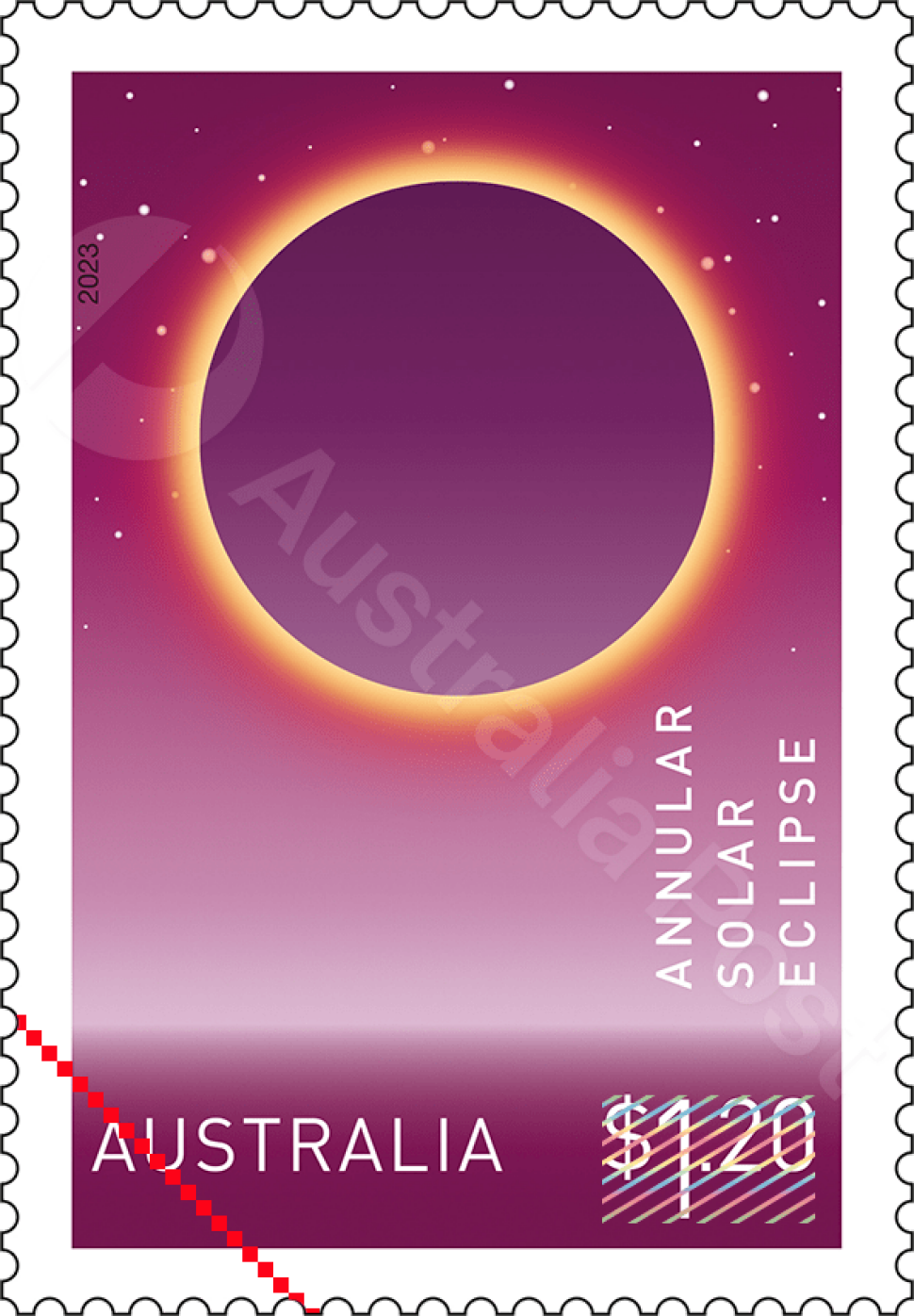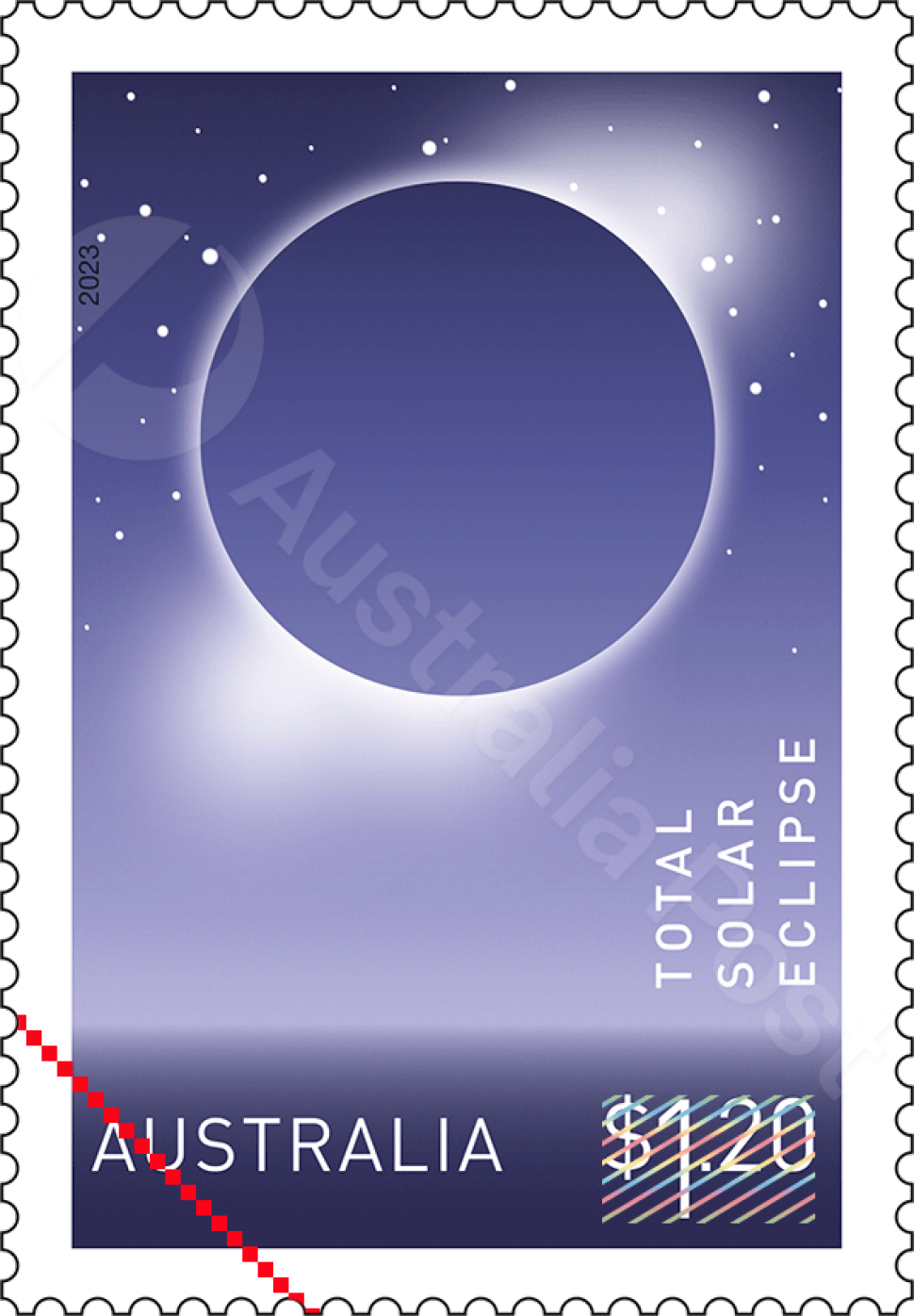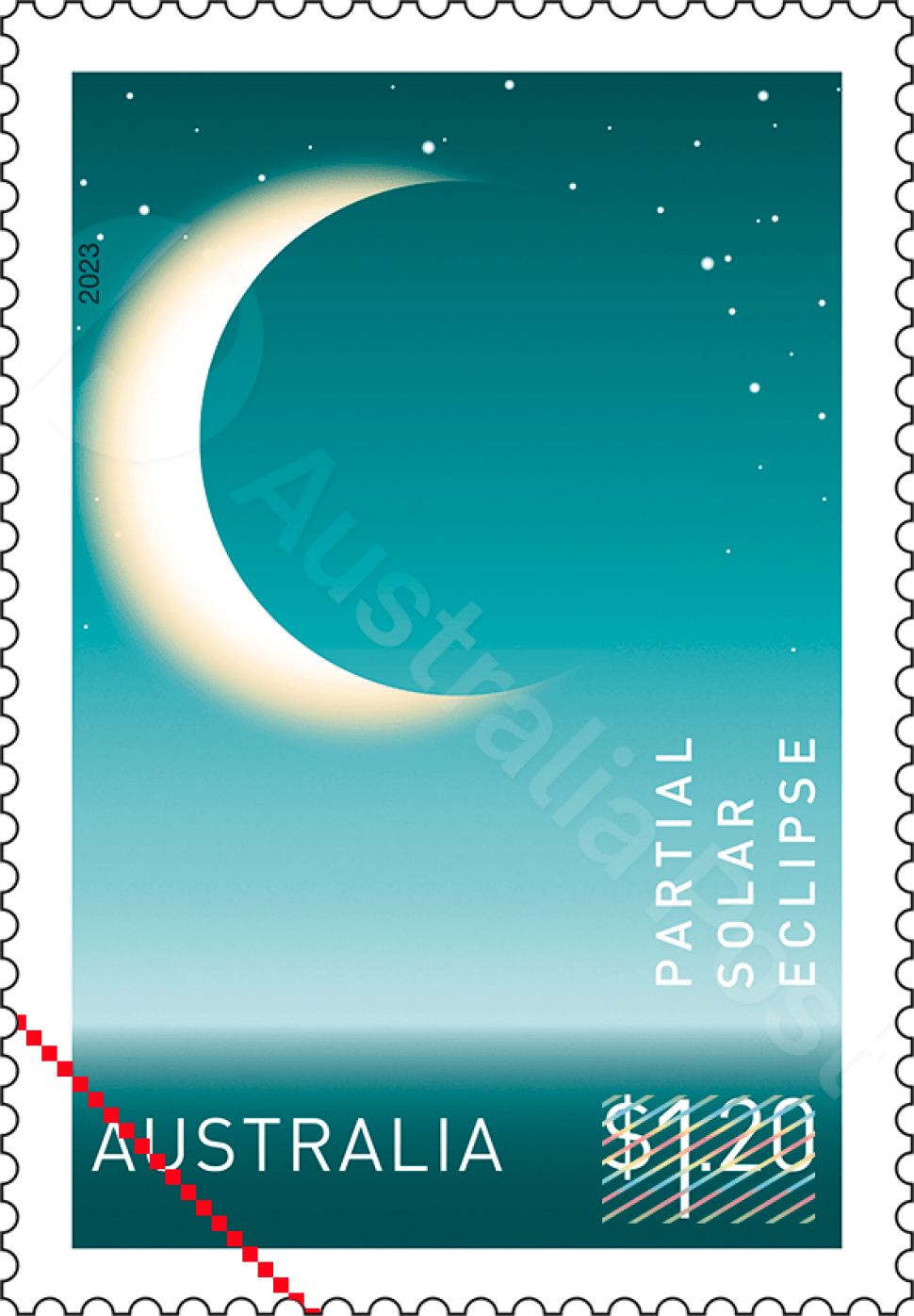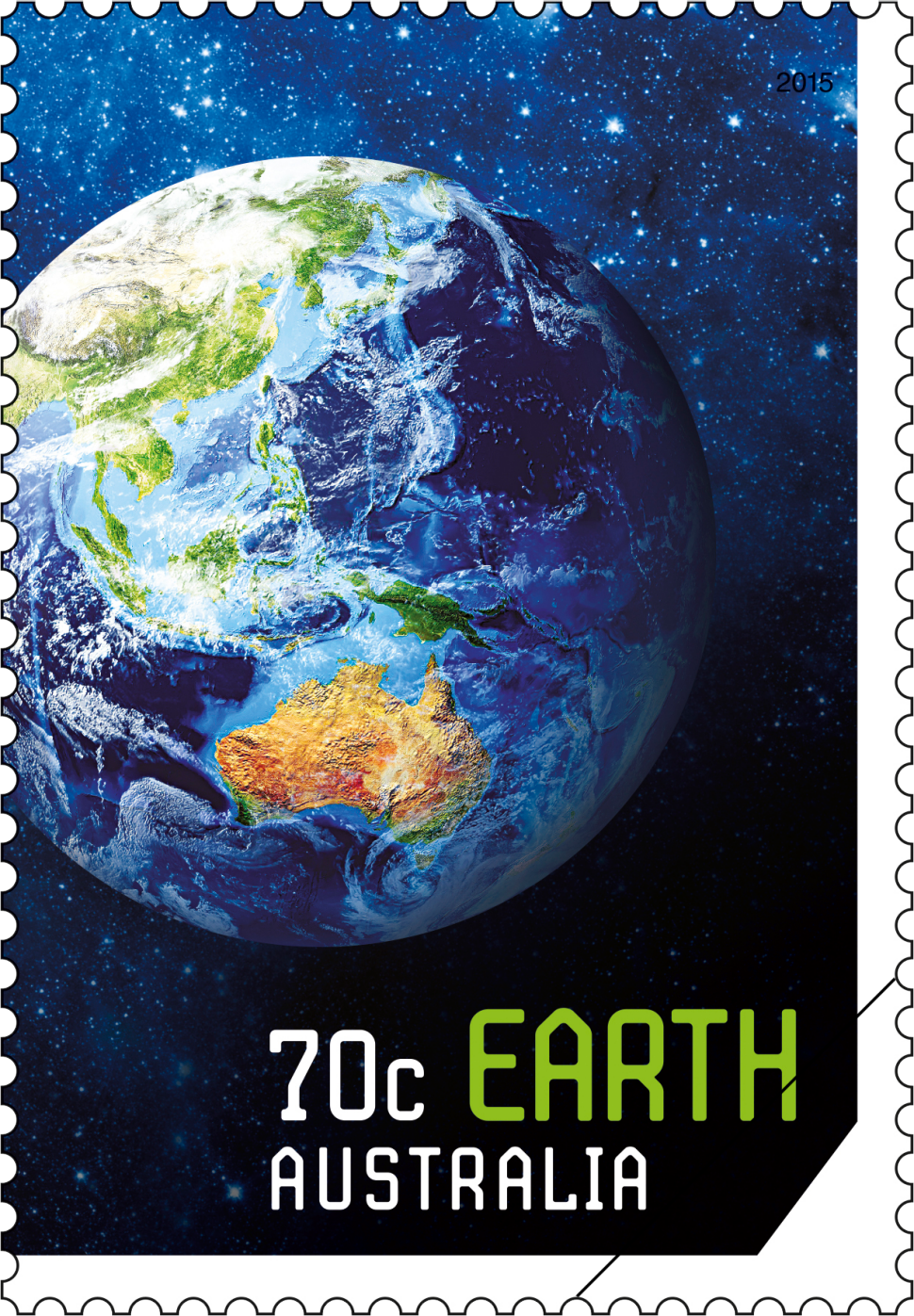Overview
Throughout human history, eclipses – both solar and lunar – have captured the human imagination. Western astronomers have studied total solar eclipses for more than a century, and this has helped shape our knowledge of the Sun’s composition and processes, and it has also deepened our understanding of the Earth and the space environment in which our planet exists.
Eclipses occur when the Sun, Moon and Earth line up, and that alignment can be partial or full. Solar eclipses occur when, in combination with a lunar node (the intersection of the orbital planes of the Sun and Moon), the Moon passes between the Sun and the Earth during a new Moon phase; lunar eclipses occur when the Earth passes between the Sun and the Moon.
This stamp issue presents three types of solar eclipse: partial, total and annular. This issue is being released in the lead-up to a hybrid eclipse (a rare annular–total eclipse), which is due to arrive on 20 April 2023, viewable at 11.29am over a small part of the west coast of Western Australia, the Exmouth peninsula.
Technical specifications
- Issue date
- 11 April 2023
- Issue withdrawal date
- 31 October 2023
- Denomination
- $1.20 x 3
- Stamp design
- Gary Domoney, VISUA®
- Product design
- Gary Domoney, VISUA®
- Paper: gummed
- Tullis Russell 104gsm Red Phos.
- Paper: self-adhesive
- Domain S/A Securpost MC 90 P11P Non- Phos
- Printer
- EGO
- Printer: self-adhesive
- RA
- Printing process
- Offset lithography
- Stamp size (mm)
- 26 x 37.5
- Minisheet size (mm)
- 170 x 80
- Perforations
- 14.6 x 13.86
- Sheet layout
- Module of 50
- FDI Postmark
- Exmouth WA 6707
- FDI withdrawal date
- 10 May 2023
$1.20 Annular Solar Eclipse
Second-most common is the annular eclipse, which takes place when the Moon is at its farthest point (apogee) from the Earth on its elliptical orbit of our planet. Because it is at this distant point, it appears smaller (by 14 per cent) than it is when it is at its closest proximity (perigee) to the Earth. This makes the Moon appear smaller than the Sun when it crosses its path, meaning it does not fully block the Sun. In a darkened daytime sky, the Moon will appear as a dark disk superimposed on the larger disk of the Sun, resulting in a ring of fire (annulus) as the Sun shines around the Moon’s circumference.
$1.20 Total Solar Eclipse
Total solar eclipses happen every 18 months or so, but often they will be visible only from remote locations, meaning they are seen by relatively few stargazers. This type of eclipse occurs when the Moon completely blocks the face of the Sun, and those in the centre of the Moon’s shadow when it hits the Earth will experience the phenomenon of “totality”. The sky will darken as the Moon passes in front of the Sun and only the Sun’s corona (outer atmosphere) will be visible around the black disk of the Moon. This white, hazy celestial zone comprises extremely hot particles ejected at high speed from the Sun’s surface.
$1.20 Partial Solar Eclipse
A partial eclipse is the most humble and common of solar eclipses. It occurs when the Moon does not align perfectly with the Sun, so covers only part the Sun. Depending on the “magnitude of eclipse” the sky may darken but day does not turn to night during the event. The magnitude of eclipse refers to the area of the Sun occluded by the Moon: sometimes it appears as if the Moon has bitten just a small piece from the Sun; at other times the occlusion is large, and the Sun appears as a bright, narrow crescent.
Shop our stamp collectables
Set of stamps:
Set of Solar Eclipses Gummed Stamps
This set of stamps contains all three stamps from the Solar Eclipses stamp issue.
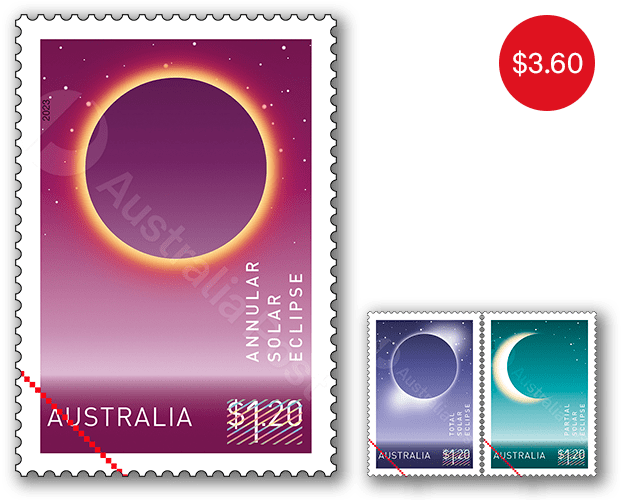
Stamp pack:
Solar Eclipses Stamp Pack
The Solar Eclipses stamp pack contains all three stamps and minisheet from the stamp issue presented in a high-quality folder.
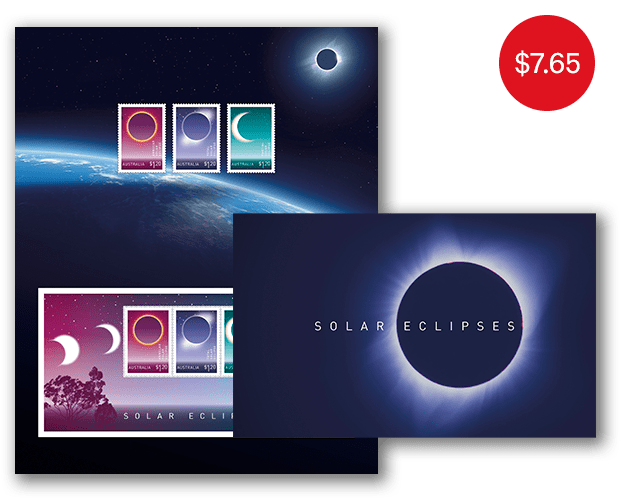
Minisheet:
Solar Eclipses Minisheet
The Solar Eclipses minisheet consists of the three stamps from the issue incorporated into a miniature stamp sheet.
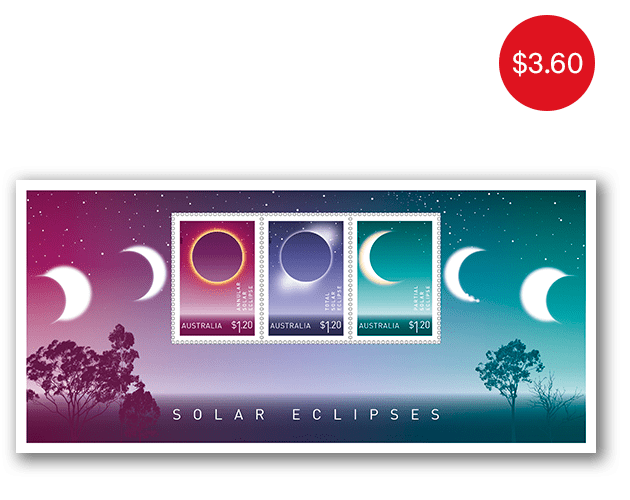
Maxicard set:
Set of Solar Eclipses Maxicards
This maxicard set contains the three maxicards from the Solar Eclipses stamp issue.
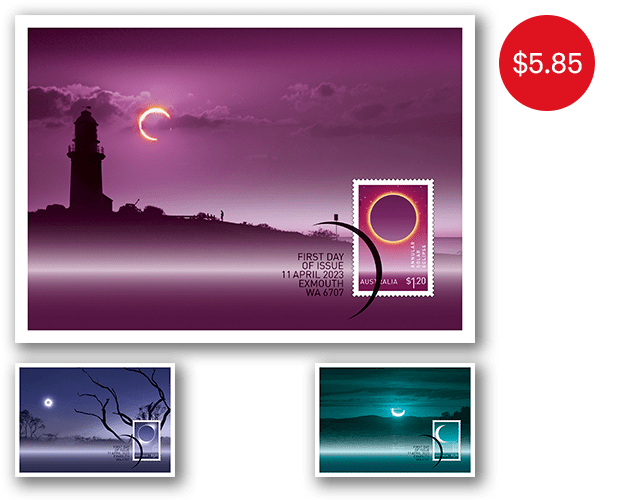
- Set of stamps
- Stamp pack
- Minisheet
- Maxicard set
Additional collectables:
- Solar Eclipses Stamp and Medallion Cover
- Booklet of 10x $1.20 Solar Eclipses Stamps
- Gutter Strip of 10x $1.20 Annular Solar Eclipse Stamps
- Gutter Strip of 10x $1.20 Total Solar Eclipse Stamps
- Gutter Strip of 10x $1.20 Partial Solar Eclipse Stamps
- Chequebook of 200x $1.20 Solar Eclipses Stamps
- Prepaid Postcard – Solar Eclipse
- Pictorial Envelope for the Solar Eclipses Stamp Issue
- Solar Eclipses First Day Cover (Gummed Stamps)
- Solar Eclipses First Day Cover (Minisheet)
This content was produced at the time of the stamp issue release date and will not be updated.
